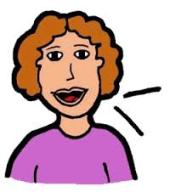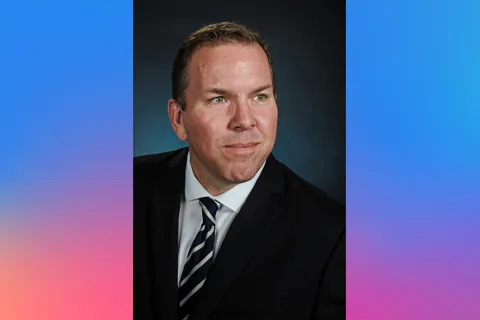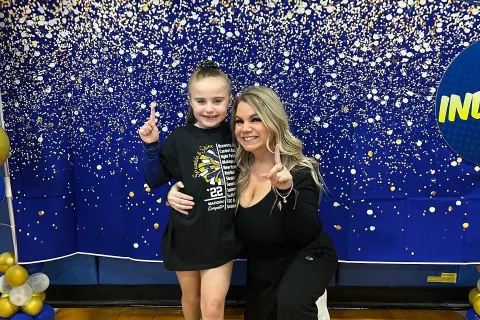Social (Pragmatic) Communication Disorder
What is Social Communication Disorder? How is it treated?
By Dr. Diane Paul and Dr. Donna MurrayToday’s response is by speech-language pathologists Diane Paul and Donna Murray. Dr. Paul is the director of clinical issues in speech-language pathology for the American Speech-Language Hearing Association. Dr. Murray serves as the senior director of the Autism Speaks Autism Treatment Network (ATN).
What is Social (Pragmatic) Communication Disorder? How is it treated?
Thank you for your question. You’re not alone in being confused about this diagnosis. Social (Pragmatic) Communication Disorder (SCD) is, indeed, a new addition to the Diagnosis and Statistical Manual of Mental Disorders 5th edition (DSM-5). The American Psychiatric Association published this new edition of its diagnostic manual in May 2013. It provides healthcare providers with new guidelines for diagnosing mental and behavioral conditions.
SCD encompasses problems with social interaction, social understanding and pragmatics. Pragmatics refers to using language in proper context. For example, it’s important for children to develop the ability to use language differently when playing with, say, a younger child versus a teacher.
The addition of SCD to the DSM-5 accompanied a major revamping of the manual’s diagnostic criteria for autism spectrum disorder (ASD).
Field tests of the new criteria indicated that some children who would have received a diagnosis of autism under DSM-IV (the previous edition) would instead receive the new diagnosis of SCD.
But while SCD is new to the DSM manual, it’s not new to speech-language pathologists. We have the training and experience to help.
How is Social (Pragmatic) Communication Disorder diagnosed?
SCD is diagnosed based on difficulties with both verbal and non-verbal social communication skills. These skills include:
- Responding to others
- Using gestures (like waving or pointing)
- Taking turns when talking or playing
- Talking about emotions and feelings
- Staying on topic
- Adjusting speech to fit different people or situations – for instance, talking differently to a young child versus an adult or lowering one’s voice in a library.
- Asking relevant questions or responding with related ideas during conversation
- Using words for a variety of purposes such as greeting people, making comments, asking questions, making promises, etc.
- Making and keeping friends
Like SCD, autism involves difficulty with social communication skills. But autism has the additional defining characteristic of restricted and/or repetitive behaviors. So an evaluation must rule out autism before reaching a diagnosis of SCD.
This differential diagnosis can be difficult because many symptoms and behaviors overlap between ASD and SCD. In addition, SCD can occur alongside other developmental issues such as language impairment, learning disabilities, speech sound disorder and attention-deficit/hyperactivity disorder.
The good news is that most medical centers have speech-language pathologists – professionals trained to assess and provide treatment for social-communication problems. Speech-language pathologists collaborate with teachers and parents to help develop children’s social communication skills in the classroom and at home.
We recommend that you work with your child's doctor or school to find a speech-language pathologist with experience in assessing and treating SCD.
Social (Pragmatic) Communication Disorder treatment
Speech-language pathologists also work with individuals who have problems with the non-verbal aspects of communication and social interaction. For example, some children don’t use gestures like waving to say “goodbye” or extending arms to be picked up. Or, they may shake their head “no” when they mean “yes.”
Additionally we can develop visual supports and other forms of augmentative and alternative communication for individuals who are non-verbal or minimally verbal. This can be as simple as pointing to pictures on a picture board or as high-tech as a speech-generating computer or electronic tablet.
Your child can receive therapy for SCD in a variety of settings. Schools and school districts employ speech-language pathologists to provide such services as part of early intervention and special education programs. Many clinics and children’s hospitals likewise offer social communication services. These include all the centers in the Autism Speaks Autism Treatment Network.
The therapist will work directly with your child and provide you with strategies for improving your child's social communication skills at home and in other settings.
Speech and language treatments are more successful with family engagement. This is especially important for a disorder that affects the social communication. It will be important for you to provide lots opportunities for your child to practice skills in real-life situations.
We likewise recommend that you involve additional “communications partners” such as your child’s teachers, counselors and other special educators such as occupational or physical therapists.
Therapy typically progresses from one-on-one with the therapist to support groups that promote using new skills with other children.
Strategies to encourage social communication skills at home
There are many activities you can do at home to encourage social communication skills in line with the goals you develop with your child’s therapist. For example:
- Take turns. Participate in simple turn-taking activities that mirror the flow of social interaction. Examples including rolling or throwing a ball back and forth. Or you can repeat words and other sounds that your child makes. Start simple with just a few turns between you and your child or your child and another person.
- Read and discuss. Read a book with your child, asking and encouraging open-ended questions such as “what do you think about what he did?”
- Talk about the feelings. Books and stories provide a great opportunity to talk about feelings. Suggest why you think a character in a story is behaving or feeling a particular way. Try extending this to real-life situations, privately discussing what a friend or sibling might be feeling and why.
- What’s next? Have your child try to predict what will happen next in a story. Help him locate the clues. Or work backward. Once an event happens, go back and figure out the clues leading up to the event. Take, for example, a picture of spilled milk and food on the floor; ask what might have happened.
- Clue into pop culture. Introduce your child to popular, developmentally appropriate shows and public figures so he can join related conversations with friends and classmates.
- Plan structured play dates. Begin with just one friend at a time and have a planned activity with a time limit – say, 60 to 90 minutes to start.
- Use visual supports. Many children with SCD – like many children affected by autism – process information visually. Visual supports can be particularly useful in helping your child understand expectations and schedules.
- For instance, you can use a visual support such as a picture of a child talking or an open mouth to cue your child when it’s his turn to talk. (See image at right.) This can help him learn to reduce inappropriate interruptions as well as learn when he’s expected to respond or comment.
- Download the Autism Speaks Visual Supports Tool Kit for more information.
- For instance, you can use a visual support such as a picture of a child talking or an open mouth to cue your child when it’s his turn to talk. (See image at right.) This can help him learn to reduce inappropriate interruptions as well as learn when he’s expected to respond or comment.
Professional help is crucial
As we’ve mentioned, children with SCD need professional intervention to develop their social interaction skills. It’s not reasonable to expect them to simply “pick up” these skills by spending time with other children. In fact, placing a child with SCD into socially demanding environments without appropriate support can do more harm than good by leading to teasing and isolation.
At the same time, participating in social activities with proper support can be a wonderful learning experience. A therapist trained in social communication intervention can provide your child – and you – with the strategies needed to make these experiences rewarding and beneficial. We encourage you to work closely with your child’s speech-language pathologists to reinforce the new skills he’s learning in therapy.
More resources to explore:
- Social Communication Disorders in School-Age Children - Information for professionals from the American Speech-Language-Hearing Association
- Social Communication Disorders in Children: Speech-Language Pathologists Can Help - A guidebook for families.











